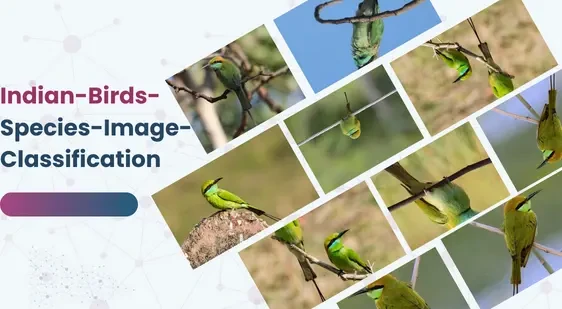Indian-Birds-Species-Image-Classification
Home » Dataset Download » Indian-Birds-Species-Image-Classification
Indian-Birds-Species-Image-Classification
Datasets
Indian-Birds-Species-Image-Classification
File
Indian-Birds-Species-Image-Classification
Use Case
Image Classification
Description
The "Indian-Birds-Species-Image-Classification" consists of 25 bird species found in India, including Asian Green Bee-eater, Brown-Headed Barbet.

About Dataset
The “Indian-Birds-Species-Image-Classification” consists of 25 bird species found in India, including Asian Green Bee-eater, Brown-Headed Barbet, Cattle Egret, Common Kingfisher, Common Myna, Common Rosefinch, Common Tailorbird, Coppersmith Barbet, Forest Wagtail, Gray Wagtail, Hoopoe, House Crow, Indian Grey Hornbill, Indian Peacock, Indian Pitta, Indian Roller, Jungle Babbler, Northern Lapwing, Red-Wattled Lapwing, Ruddy Shelduck, Rufous Treepie, Sarus Crane, White-Breasted Kingfisher, White-Breasted Waterhen, and White Wagtail.
The dataset contains a total of 37,000 images split into train and validation sets in an 80:20 ratio, with 30,000 images in the training set and 7,500 images in the validation set. Each species has 1,500 images in the dataset. This dataset can be used for image classification tasks and to develop machine learning models to recognize different species of birds found in India.
Applications of Indian Birds Species Image Classification
Biodiversity Monitoring
One of the primary applications of image classification is biodiversity monitoring. By accurately identifying bird species from images, researchers can track changes in population sizes, distribution patterns, and habitat use. This information is vital for conservation efforts, helping to identify species at risk and areas in need of protection.
Citizen Science and Public Engagement
Image classification technology also has significant potential for citizen science projects. Mobile apps and online platforms that utilize this technology can engage the public in bird watching and data collection. Users can upload their bird photos, and the app can identify the species, contributing valuable data to scientific research.
Ecological and Behavioral Studies
Understanding the ecology and behavior of birds is another key application. Image classification allows researchers to analyze large datasets of bird images, identifying patterns in feeding behavior, nesting habits, and migration routes. This data can inform conservation strategies and enhance our understanding of avian ecology.
Automated Wildlife Monitoring
In wildlife reserves and protected areas, automated cameras can capture images of birds and other wildlife. Image classification algorithms can process these images in real-time, providing continuous monitoring without the need for human intervention. This automated approach enhances the efficiency and scope of wildlife monitoring efforts.
Challenges and Future Directions
Data Quality and Diversity
One of the main challenges in image classification is ensuring the quality and diversity of the training data. Images must be clear and well-annotated, covering a wide range of species, environments, and conditions. Addressing this challenge requires ongoing efforts to collect and curate high-quality datasets.
Model Accuracy and Reliability
Improving the accuracy and reliability of classification models is an ongoing process. Researchers are continually developing new algorithms and techniques to enhance performance. Ensuring that models can generalize well to new, unseen data is crucial for their practical application.
Integration with Other Technologies
The future of image classification lies in its integration with other technologies. Combining image data with information from other sources, such as audio recordings, satellite imagery, and environmental sensors, can provide a more comprehensive understanding of bird populations and their habitats.
Real-Time Processing and Scalability
As the volume of data increases, the ability to process images in real-time and at scale becomes increasingly important. Advances in computing power and cloud-based technologies are enabling the development of systems that can handle large datasets and provide real-time insights.
Conclusion
Indian birds species image classification represents a significant advancement in ornithology and conservation. By leveraging the power of machine learning and vast datasets of bird images, we can enhance our understanding of avian biodiversity, monitor populations, and support conservation efforts. As the technology continues to evolve, it holds the promise of even greater insights and applications, making it an invaluable tool for researchers, conservationists, and bird enthusiasts alike.
This dataset is sourced from Kaggle.
Contact Us

Quality Data Creation

Guaranteed TAT

ISO 9001:2015, ISO/IEC 27001:2013 Certified

HIPAA Compliance

GDPR Compliance

Compliance and Security
Let's Discuss your Data collection Requirement With Us
To get a detailed estimation of requirements please reach us.
